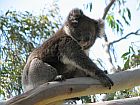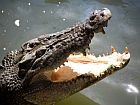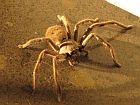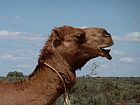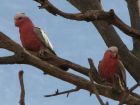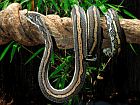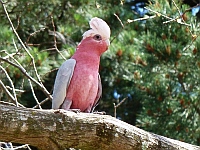
Unique Australian Animals
Australian wildlife - the cuties & the nasties in Australia
When I travel to Australia, many people envy me because of the unique Australian animals I probably get to see.
Koalas and Kangaroos are well-known and loved all over the world. I am always happy when I see one of the cuties in the wild. It is very special, and different than marvelling at them at a zoo.
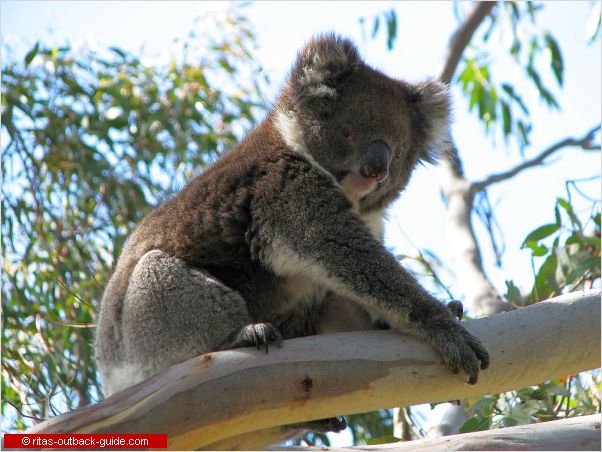
But there are other people I know who would never go because of all the dangerous creatures in Australia. They really don't know what they miss!
However, for most people in the northern hemisphere the Australian wildlife is just something special, despite spiders, snakes and crocodiles.
In this section about Australian animals I am going to tell you about the most common and cutest, as well as the most dangerous species of native Australian animals.
You also learn why many introduced animals are considered "a pest" in Australia.
Scary? I don't think so.
I always say to myself (and to the worried people) "Hey, more than 20 million people live down under. It can't be that dangerous!"
Why is Australian wildlife so unique?
Climatic and geologic events helped Australia to form its unique fauna. Australia was part of Gondwana, the huge super-continent of the southern hemisphere. About 50 million years ago Australia became an island. Due to this isolation and the lack of predators, Australia's unique fauna developed.
Marsupials that originated in Gondwana adapted in Australia, and survived until today. Australia's climate became drier about 15 million years ago, resulting in more uniquely adapted species.
Now this is only a very short introduction into the geology of Australia. I really don't want to bother you with a lengthy scientific excursion. If you are interested to read more, you'll find some interesting books at the bottom of this page.
Capital Cities
Accommodation
Special Interests
- General Facts
- Australian States
- Photo Gallery
- Climate & Bushfires
- Australian Wildlife
- Australian Opal
Rent A Campervan
Australian mammals
Kangaroos and Koalas are marsupials everyone outside Australia knows. They just represent Australia's famous wildlife. With a little luck and patience, you'll see them in their natural habitat when you travel around Australia.
Okay, it's not always their natural habitat anymore, but you can really meet them outside of wildlife parks.
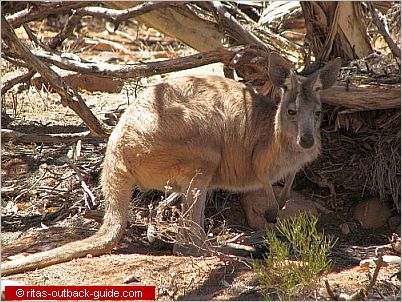
Marsupials don't have a placenta. The young are born in a very immature state, make their way through their mothers' fur to the pouch where say stay until fully developed. Wallabies, wombats and possums are other well-known marsupials in Australia.
The third group of mammals are the monotremes, warm-blooded animals that lay eggs. The
echidna and platypus are the only survivor of monotremes and are indigenous to
Australia and New Guinea.
When the first Europeans sent a pelt and a sketch of a platypus back home to Great Britain, British
scientists thought it was a hoax. Platypus and Echidna are certainly the most unique Australian animals.
Australian Birds
Among Australia's 800 species of birds about 350 are endemic. The songbirds include species like wrens, robins, magpies and many more. And then there are all the colourful parrots and cockatoos. The budgerigar is certainly the best known Australian parrot in the world.
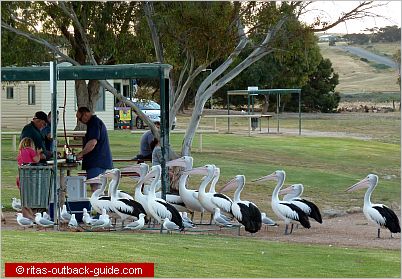
Waterbirds are represented by about 200 species like the Australian pelican, jabiru, ducks and herons. Take your time, sit down and watch Australia's amazing birdlife.
Listen to the foreign sounds, enjoy the colourful species. There's nothing better than waking up by the
concert of laughing kookaburras in the early morning. Though, this won't happen in the Outback,
unfortunately, as the habitats of the kookaburra are the open forests along the east coast and in south west of Australia.
Australian Reptiles
In the varied group of reptiles you'll find a huge number of unique Australian animals. There are frogs, turtles, snakes, lizards, and last but not least, saltwater and freshwater crocodiles. Yep, here we come to the dangerous Australian wildlife of the Outback, and the dangerous species that inhabit the coastal areas of the tropical north. The latter should worry you more than snakes and spiders.
Among the reptiles some "nasties" are included. But they shouldn't keep you off from visiting the Outback, not at all!
Australia has more lizards than any country in the world. Like crocodiles, they look like
reminders from an ancient time.
And somehow these creatures fascinate me! Lizards are reptiles you will certainly
see the most in the Australian Outback.
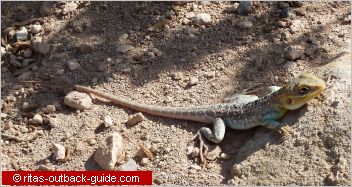
Australia has more venomous snakes than non-venomous, and some of their venoms are very potent. America's rattle snake would barely make it into Australia's top 20. Although snakes can be found anywhere in Australia, you won't see them very often. The most important thing is that they hardly harm you if you take some precautions.
Australian Insects
Insects and molluscs, or invertebrates as scientists call them, make up the biggest group of unique Australian animals. About 90 % are considered endemic. Yep, there are a lot of these crawling and flying critters out there. The Australian Outback is alive! :)
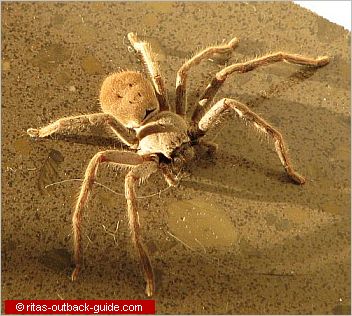
Which one will you encounter in the Outback? The flies, of cours!. Sometimes they can drive you crazy, but hey, that's Australia. And they are not only in the Outback.
And the Australian spiders? No need to worry about them if you are a bit careful.
Introduced species
During the 200+ years of white settlement in Australia many species of exotic fauna have been introduced either on purpose or accident. Most of these animals have flourished, spread all over the continent and became feral pests.
You've heard about the feral rabbits, goats, foxes, cats? These species all threaten the native fauna. Unfortunately, some unique
Australian species have already become extinct.
Australian camels belong to these introduced species. Although the numbers of feral camels have been increasing since their release into the Outback, it is widely accepted that their damage to the Australian environment is less serious.
I hope you enjoyed this summary of unique Australian animals. Please come back when you get the chance. The animal section will be growing all the time.
